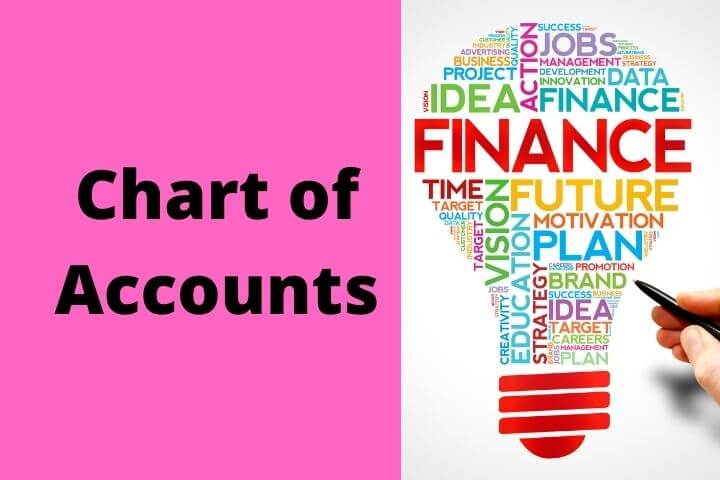Chart of Accounts
The chart of accounts is a systematically organized list classifying all of a company’s usual sources of revenue and expenses, arranged and numbered in a logical order to make it easier to find a particular account in the ledger. By application, the chart of accounts becomes a map of the components of a business’s finances. Like the ancient mariner, no accountant would ever set sail on his or her financial journey without a map – in this case, the aid of a reliable chart of accounts. It defines the categories into which you’re expected to fit all your transactions. If you order a gross of pens, for example, you need to indicate the expense as “Office Supplies” or “Art Supplies” or “Promotional Supplies” depending on the intended use and on the specific categories in the chart of accounts used by a company.
What is the Chart of Accounts
If an accountant is familiar with a company’s chart of accounts, it can help make financial operations more efficient. The chart of accounts is a way to help systematize what the company spends money on. By having such information in a highly organized fashion, a manager can understand better how money is being allocated to run the business. A manager can decide to follow this allocation or try to revise it. Whether a business is big or small, it should have a chart of accounts. It also helps in Understanding the Accounting Rules.
The complexity of that chart will depend on the size of the business, to some extent, but more on the nature of the business – whether it produces a single product or provides only one service or offers a wide assortment of products and services.
Need for Chart of Accounts
The chart of accounts is a basic component to any accounting system and one that can’t be misused or ignored. Also, as business needs change, the company should update its chart of accounts. Accounting systems keep track of assets, liabilities, equity, income, and expenses. That’s the same in any business. But to ensure consistency in the way in which employees in a particular company report business transactions into their accounting system, the company relies on its chart of accounts.
The typical chart of accounts has two parts for each entry: the account number and a brief description of the account. The account number is important because it shows how a particular account is categorized. The descriptions allow everyone to understand how any given transaction should be handled. It may be something like “Office Supplies,” or it may be a bit more detailed. Think of the chart of accounts as a checklist of items and areas the company has chosen to keep an eye on.
A company that sells widgets might have an account called “Computer Equipment and Supplies,” to adequately keep track of its several computers and printers, as well as diskettes, paper, and so forth. But a graphic design company might have three accounts for computers and printers alone (depending on the use) and separate accounts for diskettes and paper stocks. Each chart of accounts differs, but one consistent rule exists:
Set up the chart of accounts to list individually all those accounts for which detail is needed or management and control desired. A sales-oriented company probably won’t need an account for “Rubber Bands,” which are best listed under “Office Supplies.” But telephone costs will be separate from gas, light, and heat (which might be classified together under “Utilities”). Because of the number of calls your sales reps make, that expense needs to be tracked as a separate item.
Numbering the Chart of Accounts
There are several methods by which most charts of accounts are numbered: The three-digit numbering system is probably the simplest for small business, but it limits the amounts of actual accounts that can be included. An example is shown below.
| Account Description | Account Number |
|---|---|
| Assets | 100 |
| Current | 110 – 149 |
| Fixed | 150 – 199 |
| Liabilities | 200 |
| Current | 210 – 249 |
| Long – Term | 250 – 299 |
| Equity | 300 |
| Retained Earnings | 400 |
| Income | 500 |
| Expenses | 600 |
The four-digit numbering system runs very much the same way, but with four digits rather than three digits identifying the account. The advantage simply is that the four-digit system allows for more detail, as well as greater latitude to insert additional accounts within the individual sections. The layout looks very much the same as the three-digit system. An example four-digit system is shown below.
| Account Description | Account Number |
|---|---|
| Assets | 1000 |
| Current | 1100 – 1499 |
| Fixed | 1500 – 1999 |
| Liabilities | 2000 |
| Current | 2100 – 249 |
| Long – Term | 2500- 299 |
| Equity | 3000 |
| Retained Earnings | 4000 |
| Income | 5000 |
| Expenses | 6000 |
Chart of Accounts – Example
Chart of Accounts for a Theatre is given below
| 100 – 199 | Assets |
| 100 – 109 | Cash |
| 101 | Cash, Checking, Second National Bank |
| 102 | Cash, Savings, Third State Bank |
| 103 | Cash, Change, or Petty Cash Fund (Coin and Currency) |
| 110 – 119 | Receivables |
| 111 | Accounts Receivable |
| 112 | Due From Employees |
| 113 | Notes Receivable |
| 120 – 129 | Prepaid Assets |
| 121 | Cleaning Supplies |
| 122 | Prepaid Insurance |
| 130 – 139 | Property, Plant and Equipment |
| 131 | Land |
| 132 | Theatre Buildings |
| 133 | Projection Equipment |
| 134 | Furniture and Fixtures |
| 200 – 299 | Liabilities |
| 200 – 209 | Short Term Liabilities |
| 201 | Accounts Payable |
| 202 | Wages and Salaries Payable |
| 203 | Taxes Payable |
| 203.1 | Income Taxes Payable |
| 203.2 | Sales Taxes Payable |
| 203.3 | Unemployment Taxes Payable |
| 204 | Short-Term Notes Payable |
| 204.1 | Six-Month Note Payable to First State Bank |
| 210 – 219 | Long Term Liabilities |
| 211 | Bonds Payable |
| 300 – 399 | Stock Holders’ Equity |
| 301 | Preferred Stock |
| 302 | Common Stock |
| 303 | Retained Earnings |
| 400 – 499 | Revenues |
| 401 | Tickets |
| 402 | Video Rentals |
| 403 | Concessions |
| 404 | Interest |
| 500 – 599 | Expenses |
| 500 – 509 | Rentals |
| 501 | Films |
| 502 | Videos |
| 510 – 519 | Concessions |
| 511 | Candy |
| 512 | Soda |
| 513 | Popcorn |
| 520 – 529 | Wages and Salaries |
| 521 | Hourly Employees |
| 522 | Salaries |
| 530 – 539 | Utilities |
| 531 | Heat |
| 532 | Electric |
| 533 | Water |
| 540 – 549 | Advertising |
| 541 | Newspaper |
| 542 | Radio |
| 550 – 559 | Taxes |
| 551 | Income Taxes |
| 552 | Unemployment Taxes |



